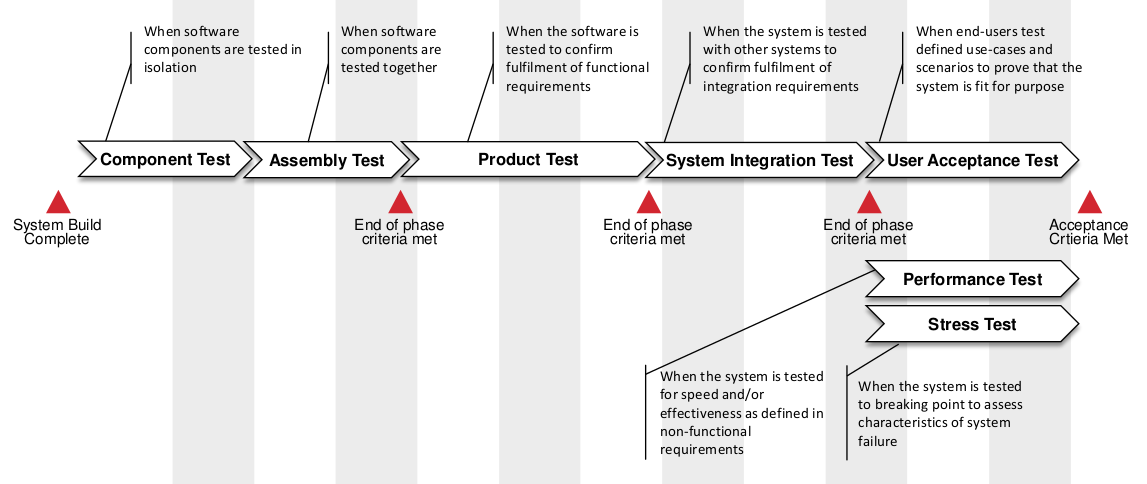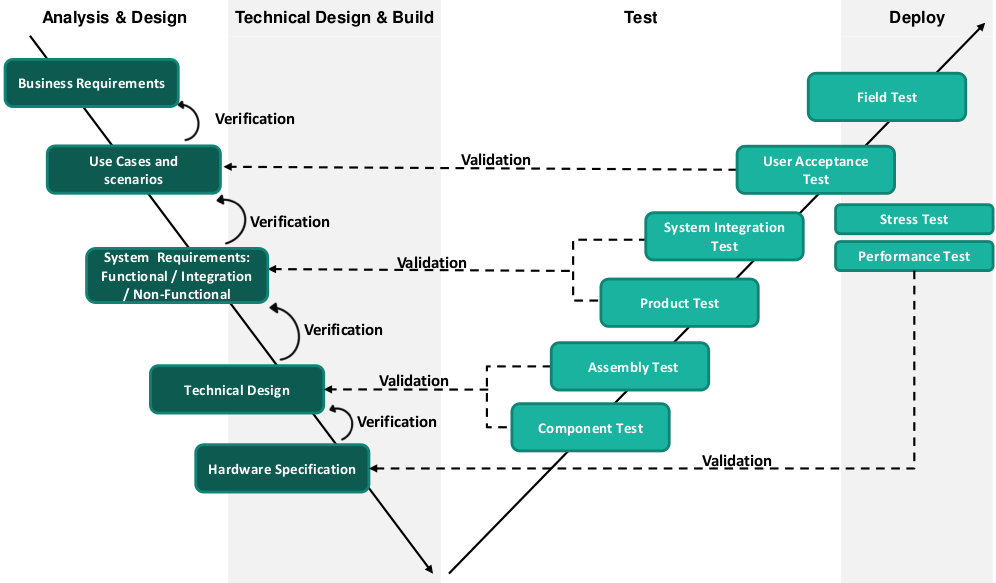Overview
Testing the digital CRVS system rigorously is essential to ensure that the system is fit for purpose when it is deployed. Testing should be done sequentially, as per the figures below, and trace directly back to system requirements defined in the Analysis and Design Phase.
Steps:
1
Define the testing approach and plan by completing the Testing Approach Template, considering:
- What types of testing need to be completed?
- How will each test phase be contained?
- How will defects been managed and resolved?
- What is the acceptance criteria?
- What test environments are required?
- Which project actor is responsible for each test type/phase?
2
Identify the required team to implement the testing approach; onboard these resources onto the CRVS Digitisation Team and ensure that they understand the scope and objectives of the CRVS Digitisation Project.
3
Define a testing plan in consultation with the developers. The plan below demonstrates the phased manner in which testing should be conducted, ensuring that clear stage gates are defined to enforce phase containment and mitigate the risk of the passing on of bugs from one test phase to the next.

High-level testing plan: enforcing phase containment







